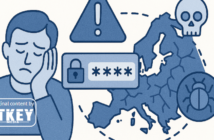Test Fast, Die Cheap: How to Uncover Unviable Ideas and Avoid Wasting Time
“To close the gestalt” is a popular expression used mainly in the context of an unrealized dream, task, or need. Until a solution is found, it occupies all thoughts and deprives one of the joy of life. Similarly, with the launch of a startup, an entrepreneur or product manager encounters a valuable “genius” business idea – the same unclosed gestalt that they rush to bring to life, at least in the form of an MVP. As a result, 90% of startups fail, and, however unfortunate it may be, this is a confirmed reality backed by research.
In this article, I will explain how to quickly, inexpensively, and almost painlessly identify and “kill” intrusive but unfeasible business ideas. And with the one that survives, you will have a chance to enter the 10% of successful startups.”
A Bit about the Market: Why Startups Fail
The most challenging period for a startup is to survive the first 2-3 years, during which the young company establishes itself, refines processes, and, of course, seeks funding. According to statistics, 70% of newly created companies face failures between 2nd and 5th year of existence. Overall, only 10% of startups become successful, and only 1% of them transform into unicorns, such as Uber, Airbnb, Slack, Stripe, or Docker.
There are many reasons for such failures, but the main one is the flawed understanding of market demand. As a result, 34% of startups fail to achieve Product-Market Fit (meaning they fail to create a product that meets market needs) and join the ranks of unsuccessful companies.
Great Idea, Great Effort
When you’re “burning up” with an idea, you’re confident that it’s a fresh solution and everyone will like it. Accordingly, you want to implement it quickly.
A common approach to creating companies, especially product-oriented ones, is the “Lean Startup” approach. Its adherents advise starting to build an MVP (minimum viable product) as quickly as possible, launching it on the market, and then analyzing demand and overall results.
The problem is that creating an MVP is expensive, time-consuming, and requires a team. It’s not necessarily a cost-effective way to test hypotheses, as essentially you’re creating a finished product without any guarantees that it’s needed by the customer.
If you’re willing to take risks, then there’s a reason to create an MVP, but it’s a long and expensive way to close the gestalt. Moreover, it can lead to reputational losses. The best approach is to first ensure the relevance of the idea, its alignment with market needs, and the technical feasibility of implementation before moving on to development.
Three Steps to Close the Gestalt: Verifying the Viability of an Idea
Given that 9 out of 10 startups don’t become successful, it’s important not to overly rely on the hope of being an exception. If failure is inevitable, it’s best to fail quickly and with minimal losses. As for myself, I’ve condensed the idea validation process into 3 steps.
My approach is to test the idea and separate “fantasy” from reality, so as not to waste time on unrealistic concepts. From my experience, it’s highly likely that when you see the idea laid out in detail on paper, it might lose its appeal to you as the creator. Moreover, you might not actually have the resources to bring it to life even if you have competitive advantage over your competitors. Once you come to terms with this, that’s it — the gestalt is closed, and you can move on.
But above all, our foremost task is to outline the product idea. It should be based on a problem, followed by the search for a solution and an understanding of the customer’s motivation: what exactly they want to gain from our product and why it matters to them. However, this sequence is frequently reversed.
Please find Part 2 here and Pt.3 here.

Dmytro Breslavets is a co-founder of the IT company P2H, which over 17 years has undergone a long and challenging journey from converting design into markup to creating comprehensive solutions for digitizing government services.





